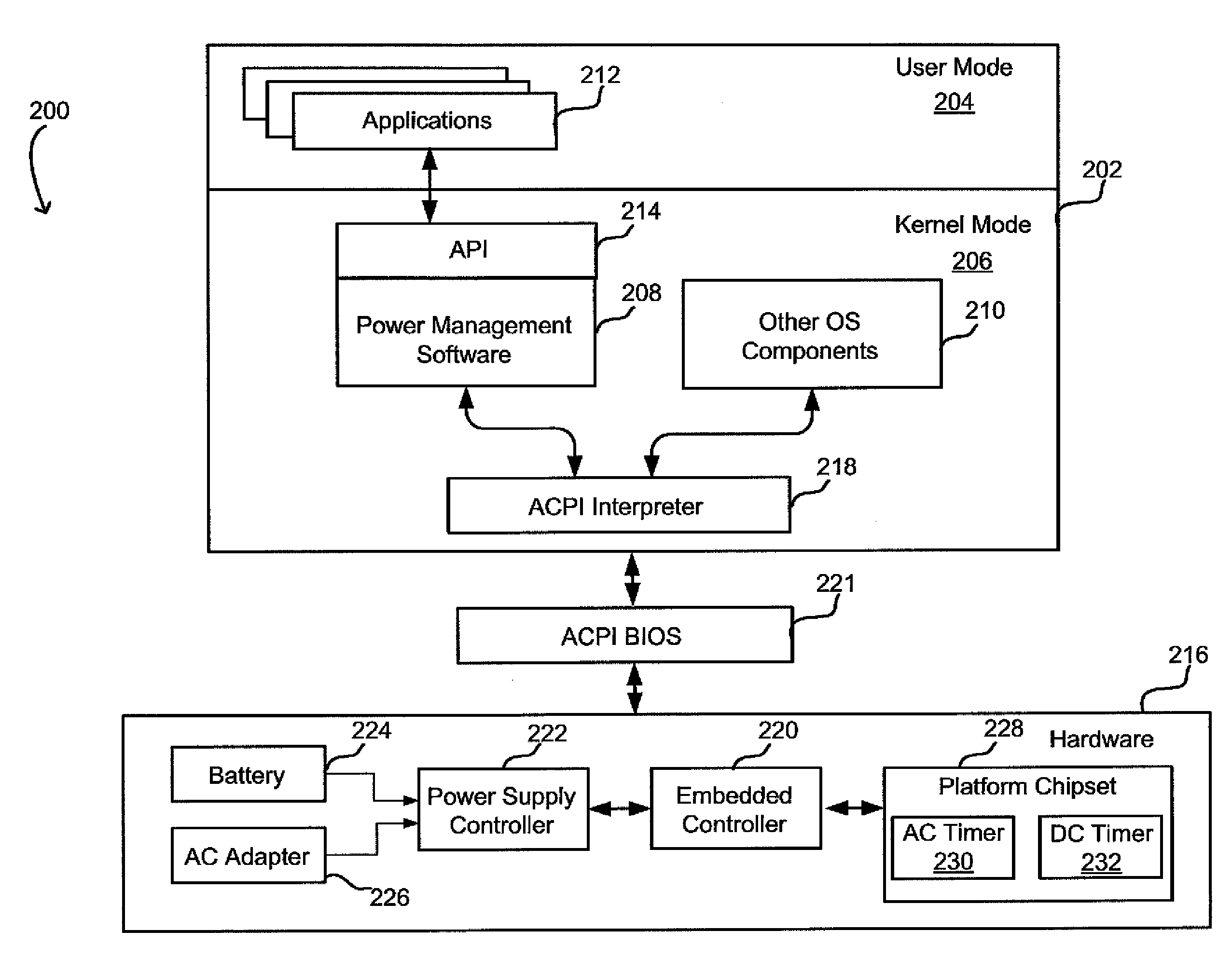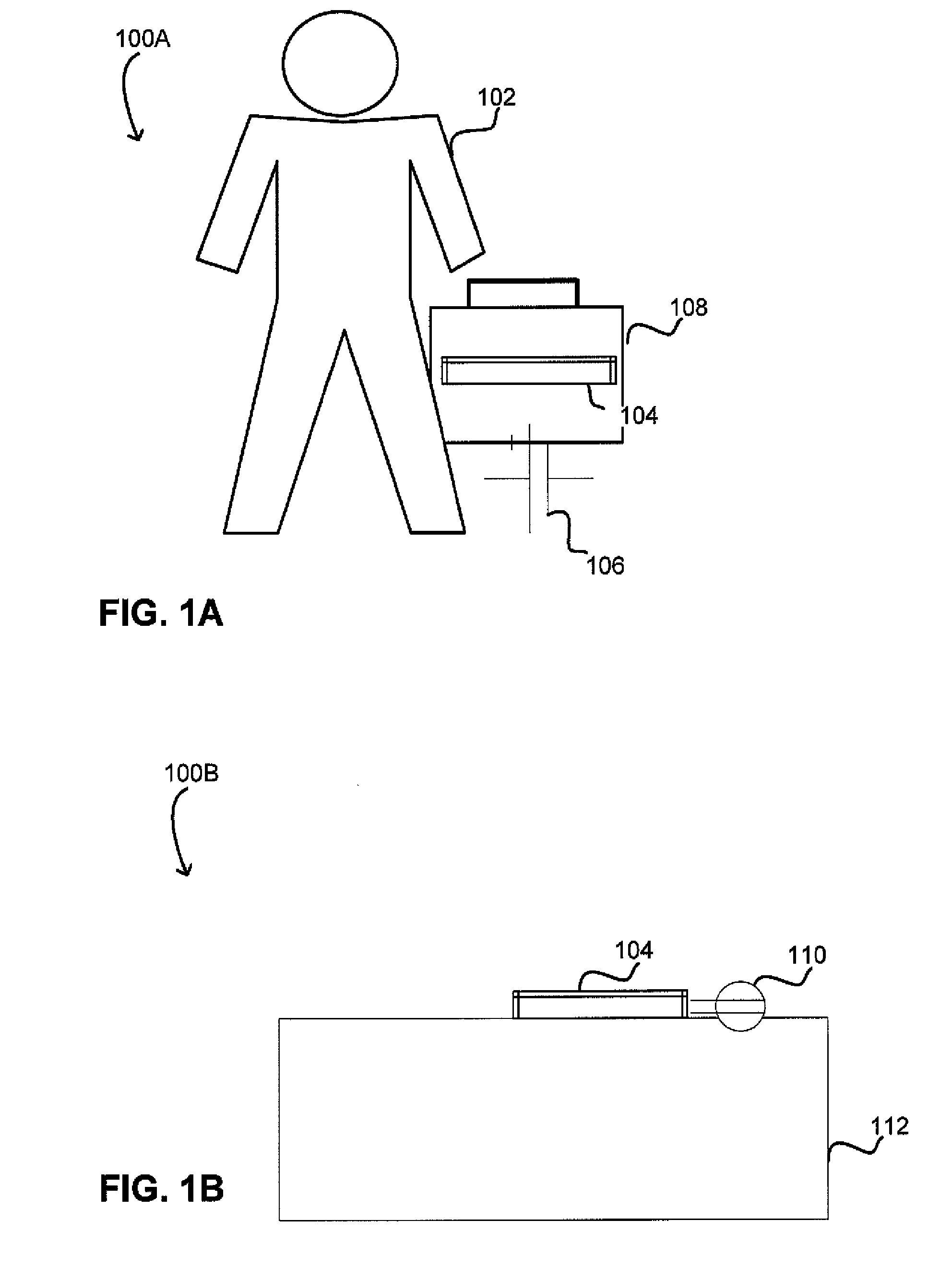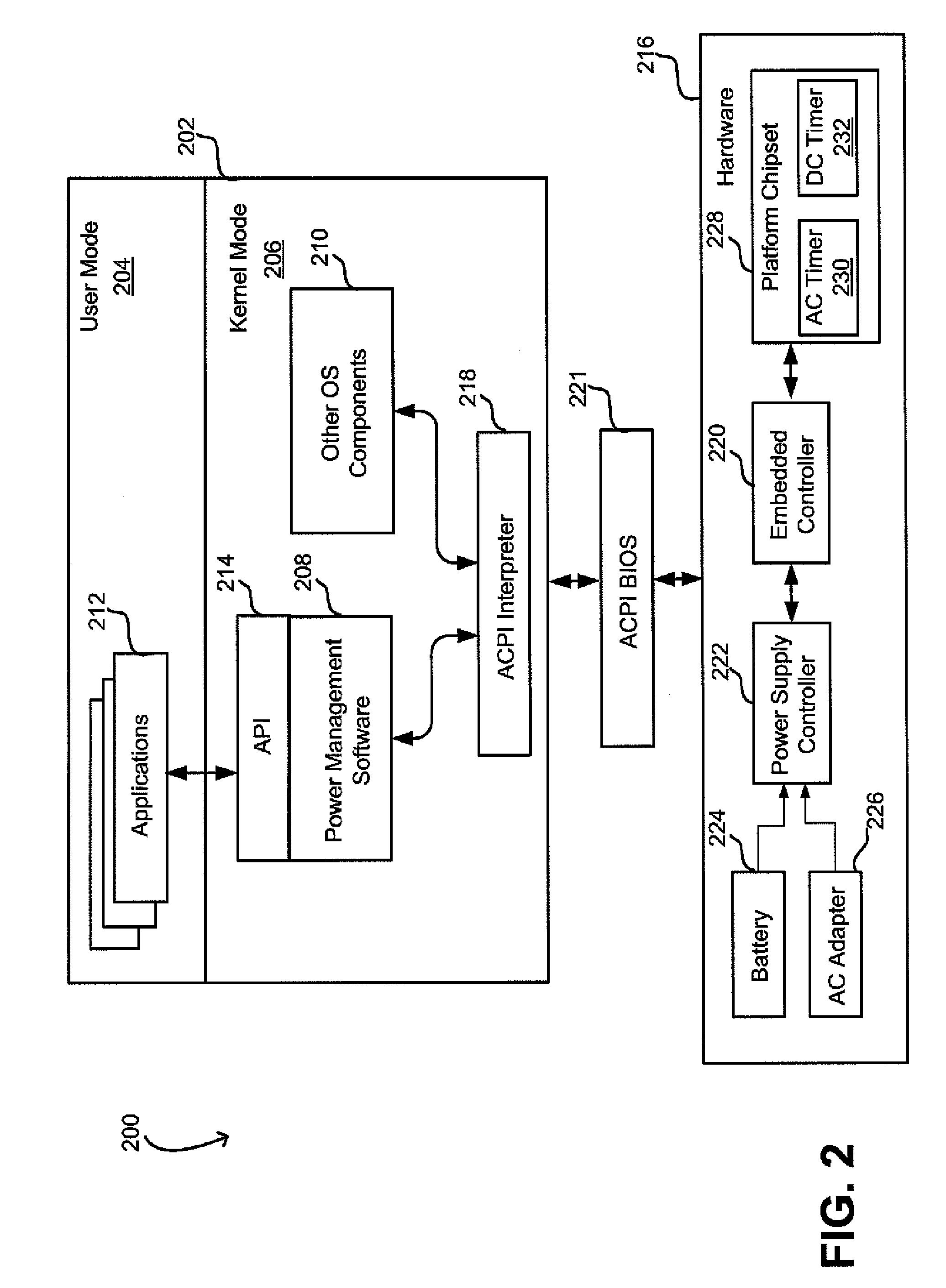Power state dependent wake-up alarm
a technology of wake-up alarm and power state, applied in the field of power state dependent wake-up alarm, can solve the problems of mobile device not transitioning back to sleep mode, device to wake up, and rtc alarm may expire, so as to achieve different wake-up behavior and improve the operation of computing devices
- Summary
- Abstract
- Description
- Claims
- Application Information
AI Technical Summary
Benefits of technology
Problems solved by technology
Method used
Image
Examples
Embodiment Construction
[0023]The inventors have recognized and appreciated limitations of known power management systems that prevent a hardware alarm, such as an RTC alarm, from waking the device from a sleep mode when the device operates on a DC battery power. A limitation of such an approach is the consequence that the device may not wake up to transition from a low to a lower power mode, which is desired to save the battery power. Therefore, a computing device situated in a possibly constrained environment may not transition from one low power mode to another, which increases system power consumption thus adversely affecting the battery life. More generally, such approach limits the ability of the device to reliably provide functionality based on timed wake-up events. For example, a device cannot be used as an alarm clock or to provide other functionality requiring automatic wake up of the computing device operating on a battery.
[0024]The inventors have appreciated that a timer determining wake-up beh...
PUM
 Login to View More
Login to View More Abstract
Description
Claims
Application Information
 Login to View More
Login to View More - R&D
- Intellectual Property
- Life Sciences
- Materials
- Tech Scout
- Unparalleled Data Quality
- Higher Quality Content
- 60% Fewer Hallucinations
Browse by: Latest US Patents, China's latest patents, Technical Efficacy Thesaurus, Application Domain, Technology Topic, Popular Technical Reports.
© 2025 PatSnap. All rights reserved.Legal|Privacy policy|Modern Slavery Act Transparency Statement|Sitemap|About US| Contact US: help@patsnap.com



